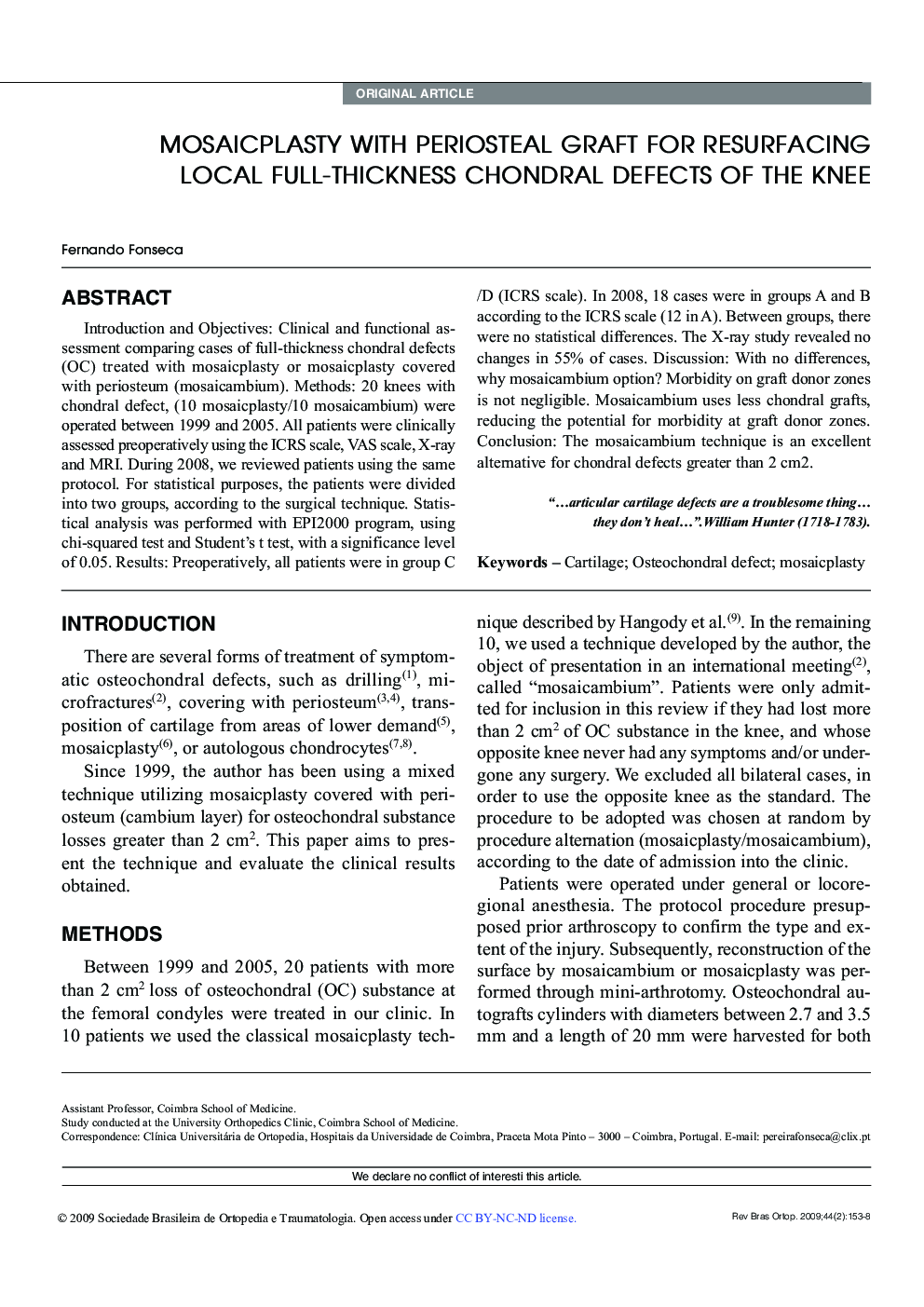| Article ID | Journal | Published Year | Pages | File Type |
|---|---|---|---|---|
| 2718536 | Revista Brasileira de Ortopedia (English Edition) | 2009 | 6 Pages |
ABSTRACTIntroduction and Objectives: Clinical and functional assessment comparing cases of full-thickness chondral defects (OC) treated with mosaicplasty or mosaicplasty covered with periosteum (mosaicambium). Methods: 20 knees with chondral defect, (10 mosaicplasty/10 mosaicambium) were operated between 1999 and 2005. All patients were clinically assessed preoperatively using the ICRS scale, VAS scale, X-ray and MRI. During 2008, we reviewed patients using the same protocol. For statistical purposes, the patients were divided into two groups, according to the surgical technique. Statistical analysis was performed with EPI2000 program, using chi-squared test and Student's t test, with a significance level of 0.05. Results: Preoperatively, all patients were in group C/D (ICRS scale). In 2008, 18 cases were in groups A and B according to the ICRS scale (12 in A). Between groups, there were no statistical differences. The X-ray study revealed no changes in 55% of cases. Discussion: With no differences, why mosaicambium option? Morbidity on graft donor zones is not negligible. Mosaicambium uses less chondral grafts, reducing the potential for morbidity at graft donor zones. Conclusion: The mosaicambium technique is an excellent alternative for chondral defects greater than 2 cm2.“… articular cartilage defects are a troublesome thing … they don't heal …”. William Hunter (1718-1783).
